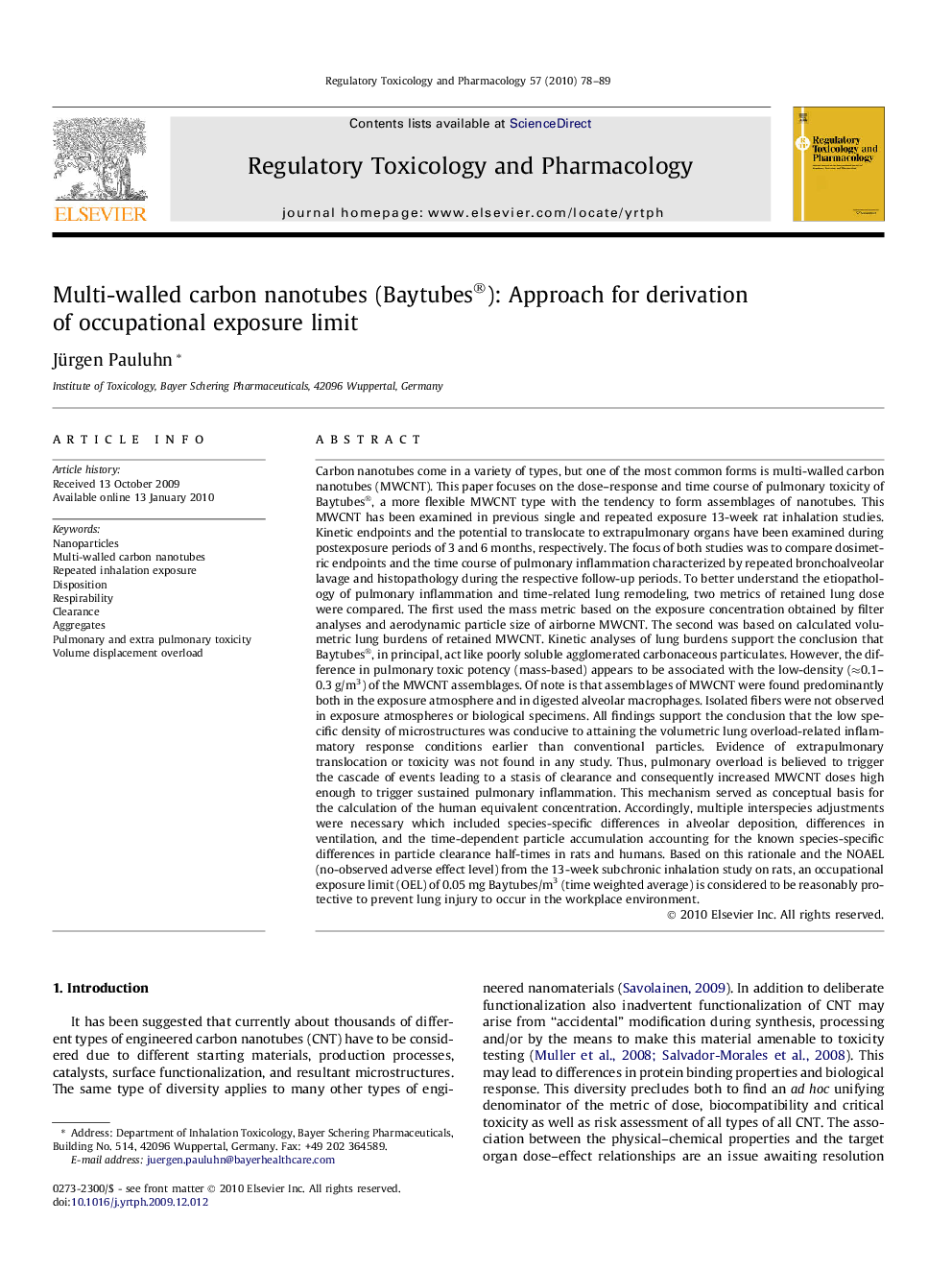| کد مقاله | کد نشریه | سال انتشار | مقاله انگلیسی | نسخه تمام متن |
|---|---|---|---|---|
| 2592477 | 1132022 | 2010 | 12 صفحه PDF | دانلود رایگان |

Carbon nanotubes come in a variety of types, but one of the most common forms is multi-walled carbon nanotubes (MWCNT). This paper focuses on the dose–response and time course of pulmonary toxicity of Baytubes®, a more flexible MWCNT type with the tendency to form assemblages of nanotubes. This MWCNT has been examined in previous single and repeated exposure 13-week rat inhalation studies. Kinetic endpoints and the potential to translocate to extrapulmonary organs have been examined during postexposure periods of 3 and 6 months, respectively. The focus of both studies was to compare dosimetric endpoints and the time course of pulmonary inflammation characterized by repeated bronchoalveolar lavage and histopathology during the respective follow-up periods. To better understand the etiopathology of pulmonary inflammation and time-related lung remodeling, two metrics of retained lung dose were compared. The first used the mass metric based on the exposure concentration obtained by filter analyses and aerodynamic particle size of airborne MWCNT. The second was based on calculated volumetric lung burdens of retained MWCNT. Kinetic analyses of lung burdens support the conclusion that Baytubes®, in principal, act like poorly soluble agglomerated carbonaceous particulates. However, the difference in pulmonary toxic potency (mass-based) appears to be associated with the low-density (≈0.1–0.3 g/m3) of the MWCNT assemblages. Of note is that assemblages of MWCNT were found predominantly both in the exposure atmosphere and in digested alveolar macrophages. Isolated fibers were not observed in exposure atmospheres or biological specimens. All findings support the conclusion that the low specific density of microstructures was conducive to attaining the volumetric lung overload-related inflammatory response conditions earlier than conventional particles. Evidence of extrapulmonary translocation or toxicity was not found in any study. Thus, pulmonary overload is believed to trigger the cascade of events leading to a stasis of clearance and consequently increased MWCNT doses high enough to trigger sustained pulmonary inflammation. This mechanism served as conceptual basis for the calculation of the human equivalent concentration. Accordingly, multiple interspecies adjustments were necessary which included species-specific differences in alveolar deposition, differences in ventilation, and the time-dependent particle accumulation accounting for the known species-specific differences in particle clearance half-times in rats and humans. Based on this rationale and the NOAEL (no-observed adverse effect level) from the 13-week subchronic inhalation study on rats, an occupational exposure limit (OEL) of 0.05 mg Baytubes/m3 (time weighted average) is considered to be reasonably protective to prevent lung injury to occur in the workplace environment.
Journal: Regulatory Toxicology and Pharmacology - Volume 57, Issue 1, June 2010, Pages 78–89